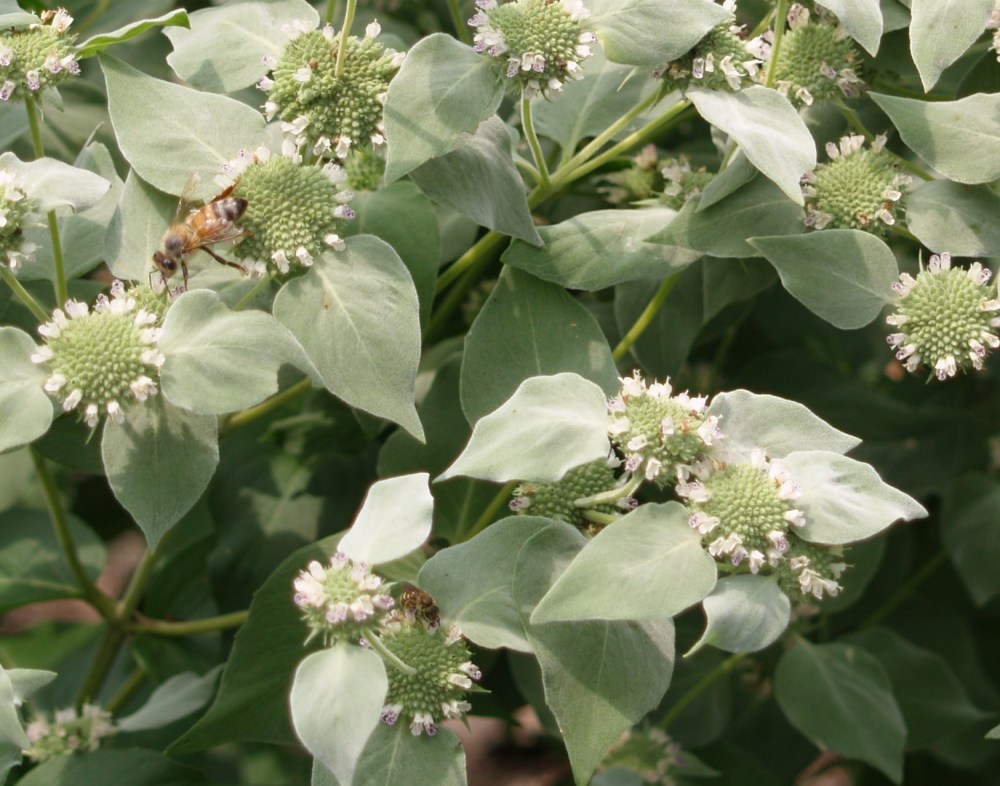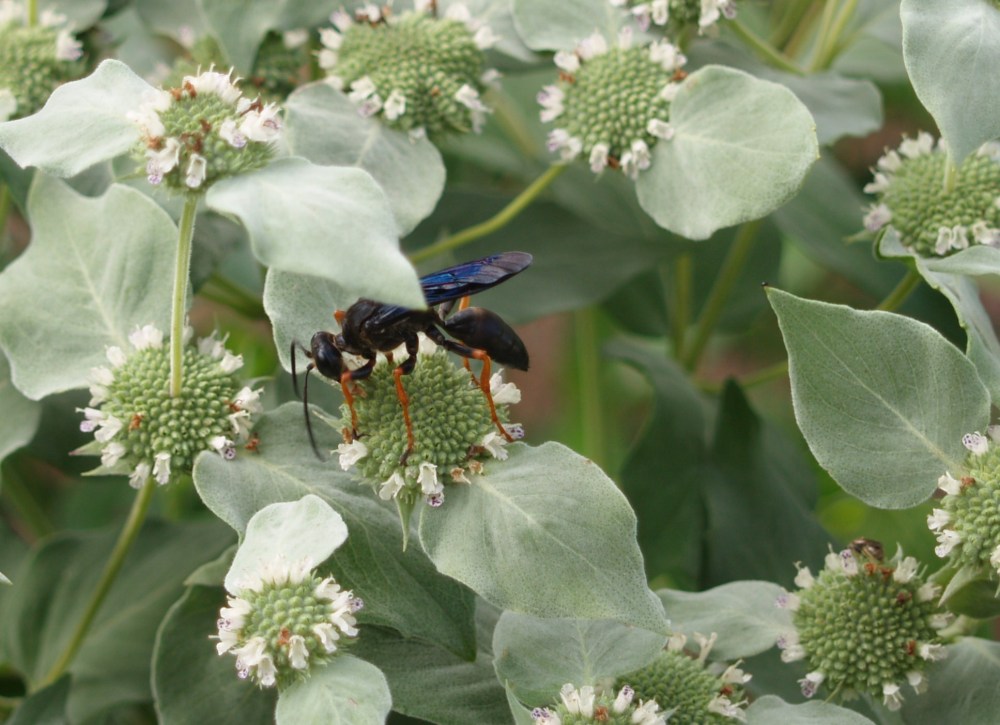The native Mountain mint (Pycnanthemum virginianum, below) is the busiest plant in the garden. Not only for a few weeks, but from early July through September the abundant blooms are constantly visited by bees, moths, and butterflies. Not only a few, but hoards, enough nasty looking bees and wasps that I fear to go close, and only a fool would dare to wade into the middle of the large clump.
The pollinators seem frantic, as if the mint’s nectar is available for a short time only. But, this goes on for weeks, and then by early September the swarms settle down to more modest numbers and the activity is not so feverish.
While bees and wasps buzz excitedly from flower to flower, butterflies seem more cautious, distracted by the stinging beasts. A Tiger swallowtail will perch on a bloom for an extended period, but remains vigilant, flapping its wings to ward off potential predators. The bees and wasps pay the butterfly no mind, intent only on savoring more of the mountain mint’s nectar.
Over several years three small plants have grown to cover an area of nearly forty square feet. I quickly learned that mountain mint will engulf any smaller plant in its path, though the new stems are easily pulled if they spread too far. I’m certain that some gardeners would find this aggressive habit an annoyance, but I’ve sited it alongside taller shrubs that successfully fend off the spreading rhizomes.
In past years the unbranched stems have stood erect through the summer, but some circumstance has resulted in the entire clump flopping to one side or the other this year. I’ll consider pruning the tall stems by half in late spring next year, and expect that they will be slightly shorter and more rigid. In any case, the flopping is likely to be a one year anomaly, and perhaps there will be no need to cut them at all.
The flopping detracts only slightly from the ornamental value of mountain mint, and of course it does not bother the pollinators at all. The coin sized discs of tiny flowers are complemented by lush foliage, with a velvety powdering of white on the uppermost leaves. The leaves emit a strong minty aroma when handled, and often just the rustling of leaves in a breeze will result in filling the lower garden with its scent.
I thought about growing mountain mint this year, but I couldn’t find a justification for it…but if it can attract that many pollinators, I will definitely consider it for a future garden.
All other flowers frequented by pollinators are practically abandoned when mountain mint is blooming. Butterflies seem to prefer Joe Pye weed and buddleia by a slight margin, but perhaps only because because they tend to be shy and are bothered by the heavy traffic.
Oh stop, please! You’re making me want to grow it even more now! Lol! What a wonderful little plant for attracting pollinators. They are definitely going on the list for my future garden!
Mountain mint also dries wonderfully simply by hanging upside down. We scented the entire church using it dry for my son’s wedding.
Hi Dave<
The mountain mint is beautiful! I wonder if it does well in the heartland of SC? I added it to my list… My Bush clover is gorgeous and pollinators love it also.
My American Smoke Tree and Flowering Apricot are both doing well through this extremely hot summer! so far so good, but I continue to watch very close… Planted Flowering Apricot May 21, so I water and watch since Nov. probably would have been a better time to plant.
Have a great day!
Curiously, mountain mint is listed by the USDA as native to North Carolina and Georgia, but not South Carolina. I’d guess that coastal areas might be too hot, but inland I expect there shouldn’t be a problem.
Good for you that your new plants are doing well. In most years I figure that new plants need only four to six weeks of watering to become safely established, but with the heat this summer it’s best to err on the side of caution and water through August.
wow… i love your garden. =)
Thanks, it has its good and bad days.